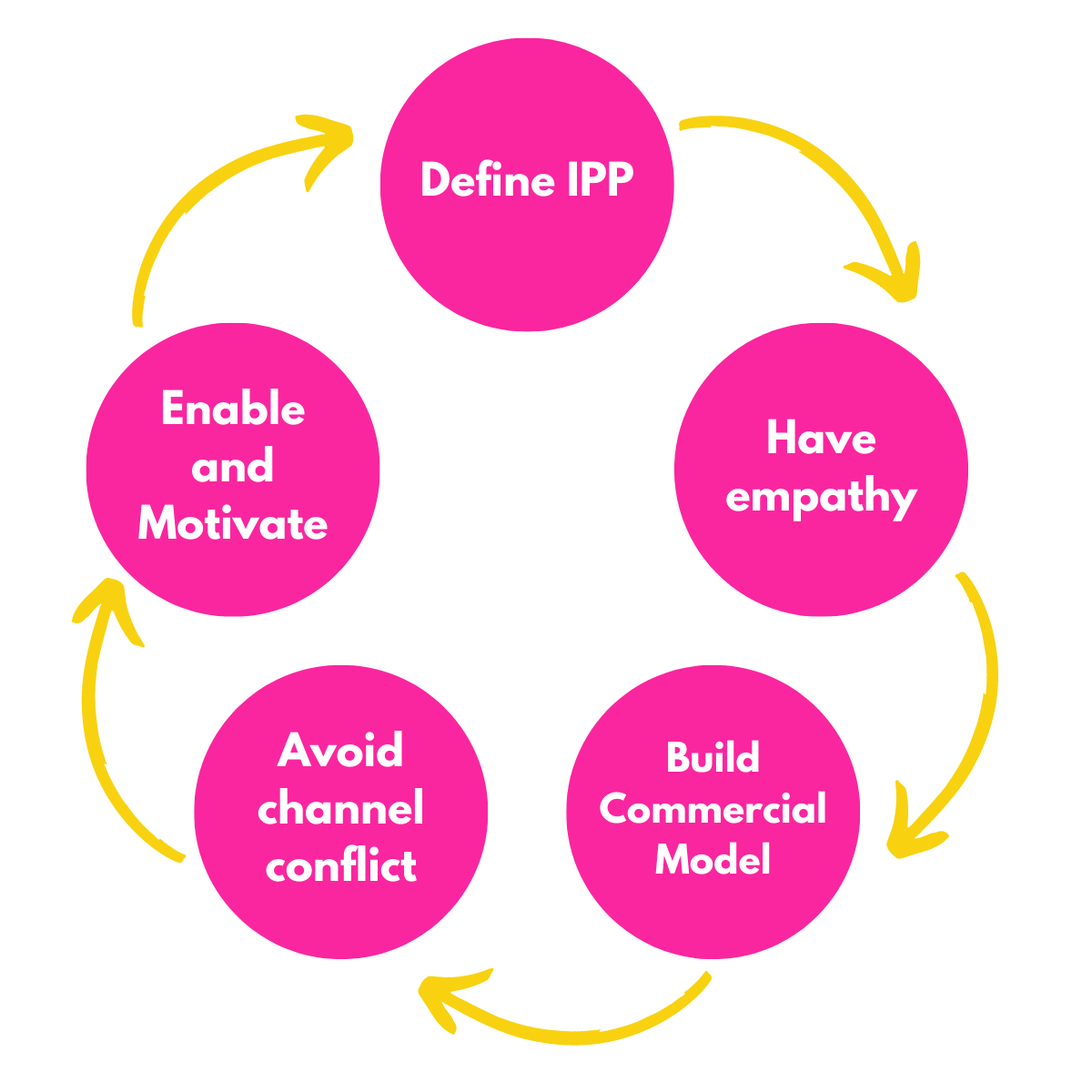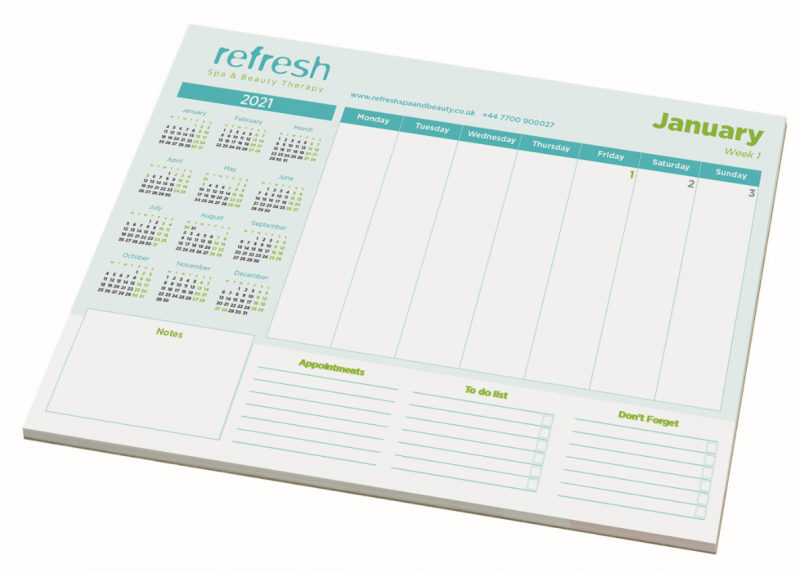5 essential steps to launch your referral partner programme
In the early 2000s I launched and ran a referral partner programme for one of the first ‘SaaS’ companies - a cloud anti-virus and anti-spam company called MessageLabs.
By the time I left we had around 1000 “associates” as we called them, delivering around 100 near-zero touch deals per month.
Here are five things you need to consider to build a similar programme for your business.
1. Define your IPP - Ideal Partner Profile
Whether your customers are SMB, Mid-Market, or even Enterprise/Strategic - they have people they trust for an external opinion.
In the MessageLabs example we were trying to crack the SMB code - and we learned that most small businesses had outsourced their technology needs to a local IT provider - a small company that helped them to install and maintain their network, updated their applications and protected their computers from external threats.
Depending on what you sell, your customers may rely on an external HR provider, an accountant, a broker, a management consultant or an external trainer.
Can you define an IPP - an Ideal Partner Profile? Is this IPP something that you could build a list around? Are there enough of them for you to target?
We were looking for IT Service Providers across Europe - there were thousands, and many were already listed as partners on Microsoft or Cisco’s websites making it easy for us to find them.
2. Determine what is in it for the partner
It is easy to fall into the trap of “we’ll pay them some money, what more do they want?” but your referral partners are unlikely to feed their family off any commission you pay them.
So what are they interested in?
Take time to speak to a few of your target partners and understand the size and scope of their business.
How do they make money?
What is important to them?
How do they grow their customers?
What takes up their time unnecessarily?
What costs them most to service their customers?
In our example, the IT service providers were already making some good money by installing and maintaining the weekly patches on on-premise anti-virus products.
So at first glance they weren’t interested in working with us.
That was, until their customer got hit by a virus or increasing volumes of spam through the product they had recommended and maintained.
We uncovered that they ended up having to invest a lot of their own time cleaning up the mess.
Now they understood that recommending our solution kept their customer happy and allowed them to focus their time on higher value activity with their clients.
Consider how having your product installed at the customer can help them with their wider relationship - what will they be able to do differently if their customers use your product. Will you provide the partner with data or insights they couldn’t achieve without your product?
3. Agree a commercial model
Most referral partner programmes pay a one off commission, between 5 and 25% of the first year’s ARR. At MessageLabs we paid 15% on the first year.
You want to have an amount that is meaningful to the partner - but that doesn’t destroy your Customer Acquisition Cost (CAC) calculations.
Some vendors will pay a trailing commission for future years - maybe 5% or 10%.
At MessageLabs (then renamed Symantec Hosted Services) we launched this only to a higher tier of partner that delivered consistent revenue.
A trailing commission keeps the partner motivated to keep their customers with you.
You don’t want to be in a situation where the only scenario that doesn’t reward the partner is keeping the customer with you.
It is easy to think “its on our contract, they are our customer”, but remember - the customer trusts the partner, they don’t have a deep relationship with you.
4. Avoid channel conflict
Channel conflict happens when your direct sales team are compensated differently for their self-generated ‘direct’ deals compared to the referral generated ‘channel’ deals.
Take the scenario where the direct sales team are excluded from working with referral deals, which are passed to a separate high volume partner team.
When a referral opportunity comes in - if there is a record in CRM and the direct salesperson has had any kind of contact with that prospect - then the direct salesperson will start defending why this isn’t a referral and that the deal was already about to be closed.
They try to exclude the partner from the deal to maximise their personal commission.
The partner won’t make that mistake a second time.
Now they’ll keep their cards close to their chest and only raise their hand when the customer has a contract ready to sign.
At MessageLabs we paid direct salespeople fully on referral business.
This meant sellers were fully supportive of the referral programme, uncovering new partners for us, coaching and educating partners, and helping the partners close their deals.
On the face of it you could say we were paying double commissions - but with that came huge benefits:
Partners brought us ‘ready to close’ deals
Direct sellers brought us ‘ready to sign up’ partners
Partners explained the pricing to the customer - no negotiation
The partner just asked for a contract
The direct team sent it out to the partner
The partner got it signed by the customer and faxed it back (yes - 2002!)
The partner managed the implementation
The partner picked up the common adoption and support issues (an outsourced CSM!)
All for 15% of the first year’s ARR (and for premium partners a trailing commission).
Our salespeople that embraced the referral programme were some of our top performers.
They understood they could have a quarter of their target done each month for very little investment of time.
5. Enable and inspire your partners
This was early 2000s, so we didn’t have Slack channels or fancy Partner Management platforms to use.
Here were some ways that we connected with and enabled our partners
Physical newsletter - every quarter we designed and printed a physical newsletter that we sent to our partners. We shared stories of other partners and some of the customers that had been protected by the platform. We provided sales training and advice in the four page document.
I don’t know how many people read it, or acted on it, but it gave us the opportunity to talk with our partners in our tone of voice as a supportive vendor.
Desk Doodle Pads - In 2002 everyone worked in an office - so we could send items knowing where people were.
We designed an A1 sized desk pad for doodling on. Around the side of the pages we put product information, sales advice, objection handling, licencing details and even little word searches for fun. We knew the item was useful, and was a nice way of keeping our brand in front of the partner every day.
Incentive Award Cards - Whilst our partnership was with a company, we knew their were individuals that were responsible for recommending us to their customers and we wanted to reward them personally.
We launched a prepaid card programme called Club MessageLabs, where individuals that had referred a certain number of customers would get a personal payment of around £50 onto a branded prepaid Mastercard in their personal name.
When they used this card to pay for food or gifts, it reinforced that working with MessageLabs provided them with tangible benefits.
The programme drove awareness of MessageLabs across their other colleagues bringing more opportunities our way - “How do I get one of those?”
As the cards had a monthly fee to maintain we also had a rule that if individuals didn’t provide a customer over a three month period they would lose their right to the card, which kept these “Club MessageLabs” members very engaged!
These were just some of our ideas - In today’s world you can be more inventive — consider the world from your partner’s perspective and how you can motivate and inspire them.
Always be recruiting!
Those five steps will help you design a referral programme that works.
Now you need to continually add partners in.
By the very nature of these smaller partners, they have a limited client base, and once they are engaged and motivated, they’ll bring them on quickly.
To keep your programme growing you need to add in new partners to supplement those that have sold out their customer base - another good reason for having your direct sellers on board - they will hunt out new partners for you in their own direct business.
Get started
Whenever you are ready, there are two ways that I can help you accelerate your revenue.
Buyer Experience Audit - I’ll impersonate a buyer researching your segment and company and let you know what I find. Ideal for planning your Revenue Operations strategy.
RevOps Impact Playbooks - I’ll help you implement one or more tactical processes across your revenue teams - content, referrals, testimonials, adoption and more..




